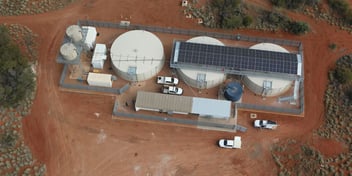How SA Water is using technology to improve the customer experience
A real-time incident mapping system has transformed how SA Water responds to customer concerns.
During a presentation at Ozwater’20 Online last week, SUEZ Water and Wastewater Centralised Systems Support Manager Julien Anese described how Allwater (a joint venture between SUEZ and Broadspectrum) and SA Water developed the tool to enable a faster response to the utility’s 1.3 million customers in metropolitan Adelaide.
“When a customer contacts our care centre, they describe the issue to our operators and everything is captured in our Maximo system,” Anese said.
“A work order is created, which is used by our dispatch team to send the right person to the right location as soon as possible. The issue may also be escalated to a manager depending on the incident.”
But with teams located across the city, it can be difficult to see the big picture, which is where the Advanced Customer Complaint Mapper (ACCM) comes in.
The ACCM collects data from the Maximo system, such as location of the complaint, classification and status, as well as information on water main failures and data from SA Water’s Laboratory Information Management System.
This is compiled into a map, providing customer service and operational teams a visual representation of where faults are happening across the city, in real time.
“These people work at different locations at different times of the day and week,” Anese said.
“It’s challenging to know everything that’s going on in real time, so this map is invaluable.”
But simply developing the map wasn’t enough. Anese said team members didn’t always have time to use the program, and so the business wanted to simplify things further.
An additional notification system was added to ensure the right people were kept informed of any issues.
“The cluster notification system means as soon as certain criteria are met, the system will send an SMS and email to all relevant stakeholders,” Anese said.
“The criteria will depend on the fault type but, for example, if we have three people living in the same suburb in the same pressure zone and they have all reported low pressure in the last 24 hours, this means it’s a cluster. So this would be highlighted through an email and SMS to everyone.
“All the problematic areas will be known in real time.”
Anese said the tool has improved communication between teams, as everyone from senior managers to technicians in the field have access to the same level of information.
“This will help fix problems faster and provide a better response for our customers,” he said.
“As we all know, happy customers mean happy water utilities.”


